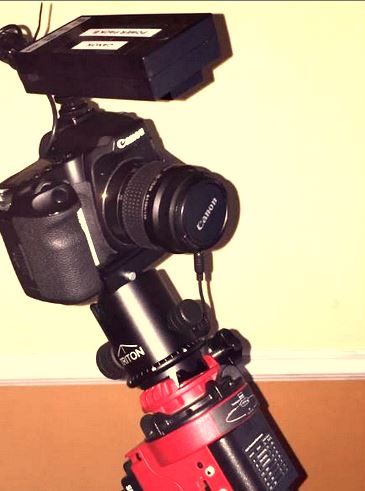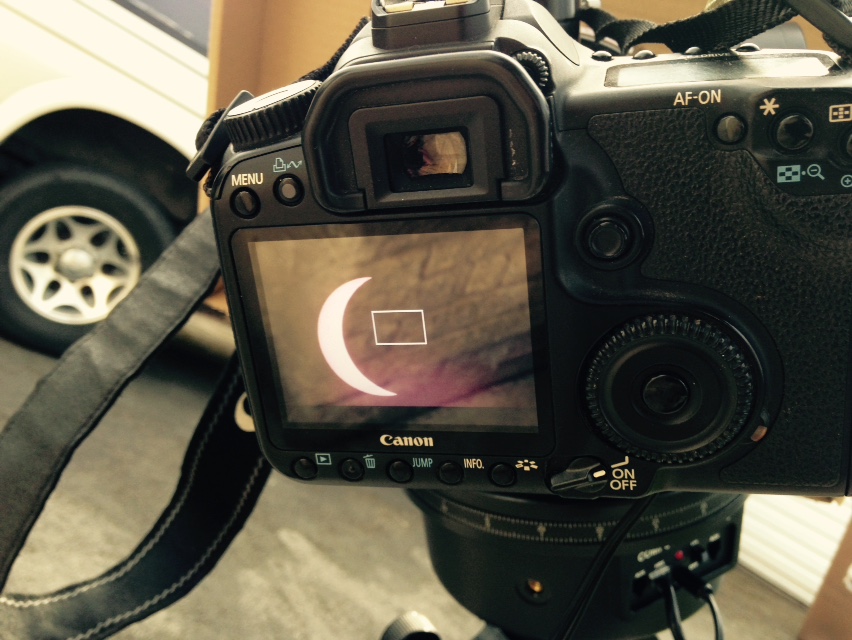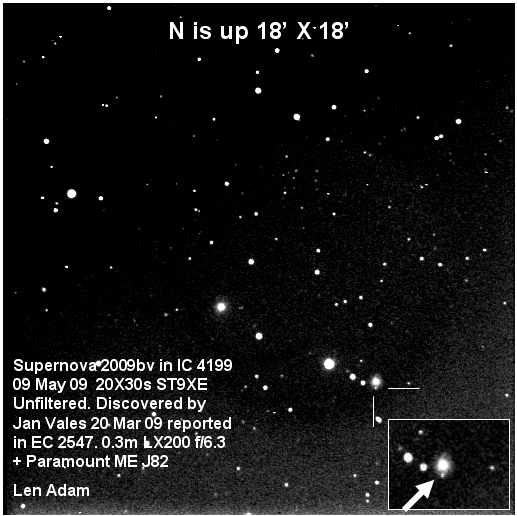Galaxy Run 12th October 2009
 Monday, October 12, 2009 at 11:59PM
Monday, October 12, 2009 at 11:59PM I managed to image 345 galaxies on this run but many were of poor quality because of the low altitude and associated haze and light pollution.
 [Your Name Here] | Comments Off |
[Your Name Here] | Comments Off |
Ford's excellent
monthly calendar
ABOUT THE WEBSITE - CLICK HERE
My Telescopes
My Main Telescope - C14 and Paramount ME

My new Paramount MyT and 8-inch Ritchey-Chretien Telescope

MyT Hand Controller
My Meade 12 inch SCT on a CGEM (Classic) Mount
My 4 inch Meade Refractor with Sky Watcher Guidescope and ZWO camera on a CGEM (Classic) Mount

Skywatcher Star Adventurer Mount with Canon 40D
My Solar setup using a DSLR and Mylar Filter on my ETX90

DSLR attached to ETX90. LiveView image of 2015 partial eclipse on Canon 40D
I try to log my observing and related activities in a regular blog - sometimes there will be a delay but I usually catch up. An index of all my blogs is on the main menu at the top of the page with daily, weekly or monthly views. My Twitter feed is below. I am also interested in photograping wildlife when I can and there is a menu option above to look at some of my images. I try to keep the news feeds from relevant astronomical sources up to date and you will need to scroll down to find these.
The Celestron 14 is mounted on a Paramount ME that I have been using for about 10 years now - you can see that it is mounted on a tripod so is a portable set up. I still manage to transport it on my own and set it all up even though I have just turned 70! It will run for hours centering galaxies in the 12 minute field even when tripod mounted.
 Monday, October 12, 2009 at 11:59PM
Monday, October 12, 2009 at 11:59PM I managed to image 345 galaxies on this run but many were of poor quality because of the low altitude and associated haze and light pollution.
 Sunday, October 11, 2009 at 11:47PM
Sunday, October 11, 2009 at 11:47PM A fairly clear night with some drifting light cloud. A continuous run produced images of 243 galaxies - mainly small and faint. These were blinked with previous images in the template library although not all could be checked because some were being imaged for the first time. In some of the "slices" too many galaxies had been included so the synchronism with the rotation of the Earth "slipped", and later images had moved across to the West of the Meridian. However there was no need to move the dome slit at all during the run.
 Thursday, October 8, 2009 at 11:19PM
Thursday, October 8, 2009 at 11:19PM A bright Moon tonight with 207 galaxies imaged
 Monday, October 5, 2009 at 10:10AM
Monday, October 5, 2009 at 10:10AM There were over 10,000 Pink-Footed Geese visible at Martin Mere yesterday with more flocks coming in at frequent intervals.
In addition I managed to photograph a Kingfisher from the hide on a post in the stream in front of the hide.
 Kingfisher Martin Mere
Kingfisher Martin Mere
There are quite a number of whooper Swans there now.
 Saturday, September 19, 2009 at 12:21PM
Saturday, September 19, 2009 at 12:21PM The major problem with Supernova hunting if you have a dome is the dome itself. Unless is is automated (which mine is not) you have to keep pushing the dome around as required by the sequence of galaxies to be imaged.
One solution to this is to synchronise the galaxy set being imaged with the movement of the sky. I am trying to do this by imaging in 30 minute wide RA "slices". By selecting the sequence of these slices to be at least half an hour behind the Local Sidereal Time these slices are near "vertical "at lower altitudes.
This means that the RA axis hardly moves and the Dec axis does all of the work - also meaning that the telescope only has to move vertically - i.e. parallel to the dome slit!
As one slice is completed - just before the galaxy crosses the meridian - the next slice - half an hour of RA to the East is started, maintaining its 30 minute RA eastward separation from the meridian.
I had an initial successful run at this last night allowing me to image 175 galaxies in a couple of hours or so, with magnitudes brighter than 15. All of this without having to move the dome slit! In fact I was in my sitting room with a small wireless laptop on my knee showing the images coming in and showing progress through the galaxies - through the use of VNC - a freely downloadable bit of software. If clouds appear I can spot this on the image and rush out to close up the dome if necessary.
With my field of view of 20' X 20' and 30s exposures many of these galaxies are very small and difficult to see but are definitely there and a bright supernove could be visible. Of course larger brighter galaxies are imaged as well.
The images are going into a single folder allowing any database galaxy (template) to be detected by name in Grepnova when it is re-imaged (image). Blinking can then be used beween template and image to identify any potential supernova - or intruding minor planet or other moving object of course!
Fortunately there is a mechanism for checking online to detect minor planet locations in the vicinity of galaxies imaged.
Some images taken last night are shown below. They are all 20' X 20' with an exposure of 30s. NGC images link to the relevant image in the DSS Survey
PGC 64696
 Saturday, May 9, 2009 at 11:49PM
Saturday, May 9, 2009 at 11:49PM Supernova 2009bv as reported in The Astronomer Electronic Circular 2547

 Saturday, May 9, 2009 at 11:30PM
Saturday, May 9, 2009 at 11:30PM 